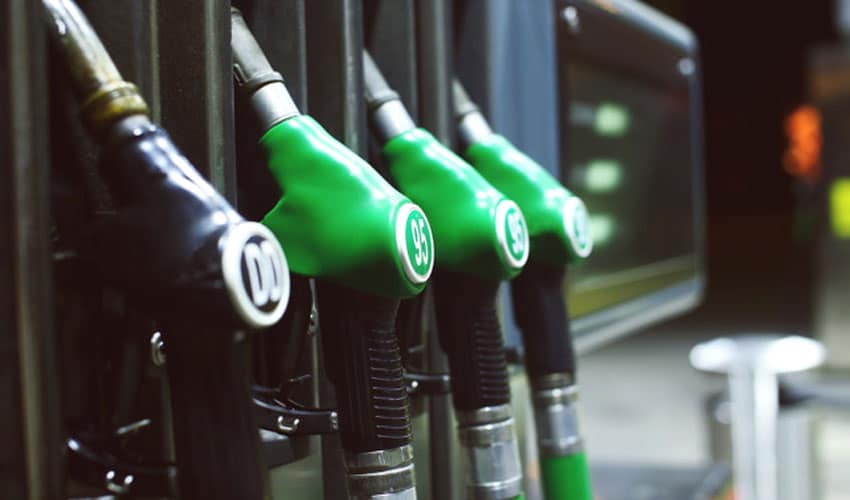Being an owner-operator in today’s market, you must be struggling to save big on fuel. With diesel prices increasing each day, it is very important to find the best way to save big on fuel.
We often hear that fuel is a “fixed” cost, meaning that it can not be controlled – but we would like to suggest a few tips that can help you save big on fuel.

Let’s list a few tips that can help you reduce your monthly expenses on fuel, and grow your business as an owner-operator.
- Use technology to your advantage to save big on fuel by finding the best fuel stops while optimizing your route
If you reconsider your route, limit side trips, and follow precise directions, you will be able to save a lot on fuel. Certain apps, such as the Truckers Patch or Gas Buddy, offer carriers resources that aid in fuel discount insights. Fuel Desk offers uncomplicated truck routing that manages your travel miles by providing the most fuel-savings-friendly directions, resulting in fewer miles traveled and lower expenses. - Reduce your average speed
Even though brokers might try to put pressure on you to deliver a load in the shortest term possible, don’t fall for this trap of trying to appease them. Always make sure you are driving at a safe speed, no matter if you are late for the delivery. Experts agree that speed is usually the main reason for increased fuel consumption and reduced profit. Your truck’s fuel efficiency declines beyond its optimal cruising speed of approximately 60 mph. However, even a minor reduction in your speed during highway driving can make a significant difference and add only a few minutes to your travel time. - Avoid idling when possible
Many drivers tend to idle when using the AC or heating at night. Idling requires about a gallon of fuel per hour, which can add up with time. With the national diesel average at $4.11 a gallon, you should avoid idling when possible. This is why we recommend buying an auxiliary power unit which will pay for itself in no time. - Buy the right fuel quality
It may be hard to find an ultra-low-sulfur diesel in specific areas, such as farming areas. Pay extra attention to the labeling if you buy from a place that is not a truck stop. - Be careful with biofuel
Biofuels can be more expensive and produce lower gas mileage. Be aware of the biofuel limit specified in your engine warranty and exclusively utilize approved fuels. - Be smart about using biofuel
Biofuels are typically pricier but result in reduced fuel efficiency. It’s important to get familiar with the permissible biofuel level stated in your engine warranty and buy only authorized fuels.

- Opt for a larger tank storage
When buying a truck, make sure you choose the one with the larger tank storage. This allows you to stock up on super-cheap fuel and reduce the number of stops. A lot of owner-operators tend to install custom-made tank storage to save up on fuel. - Choose your truck specks wisely
A big engine and heavy chrome may sound tempting, but this will affect the vehicle’s aerodynamics. Therefore, it may increase fuel consumption. - Do regular truck maintenance
Taking extra care of your truck and doing preventive maintenance to inspect for issues such as low oil, a clogged air filter, or a compressor leak can enhance your equipment’s fuel efficiency and ensure its smooth operation. You can optimize fuel consumption by maintaining your equipment in excellent working condition. - Keep track of your MPG on a regular basis
To keep track of your MPG, divide the number of miles between stops by how much fuel you burned. Make sure you do this at every single stop when possible. If you notice the number starts to change, try to figure out why this may be happening. Please note that many factors are out of your control, such as weather, but staying in tune with your truck is essential. - Maintain tire pressure
To reduce resistance, always check the tire air pressure on all 18 tires, and make sure they are up to the manufacturer’s specifications. - Shift the gears wisely
If you drive a truck with a manual transmission, make sure you are shifting gears wisely. If your engine is working harder to drive at a certain speed, this most likely means that you are burning more fuel. The idea is to use torque, not horsepower, to pull your load. Pulling with torque means keeping a specific speed without overworking the engine. The sweet spot is between 1250 – 1350 RPM, but every truck engine varies. We recommend checking the owner’s manual or contacting your truck dealer to learn more about your peak horsepower and torque at a specific RPM. - Invest in roof fairing
According to Airodyne, implementing a complete roof fairing that improves fuel efficiency by a mere 10% can result in an annual saving of $6,900. Even simpler flat-style roof fairings can enhance fuel efficiency by up to 5%, leading to substantial savings.




